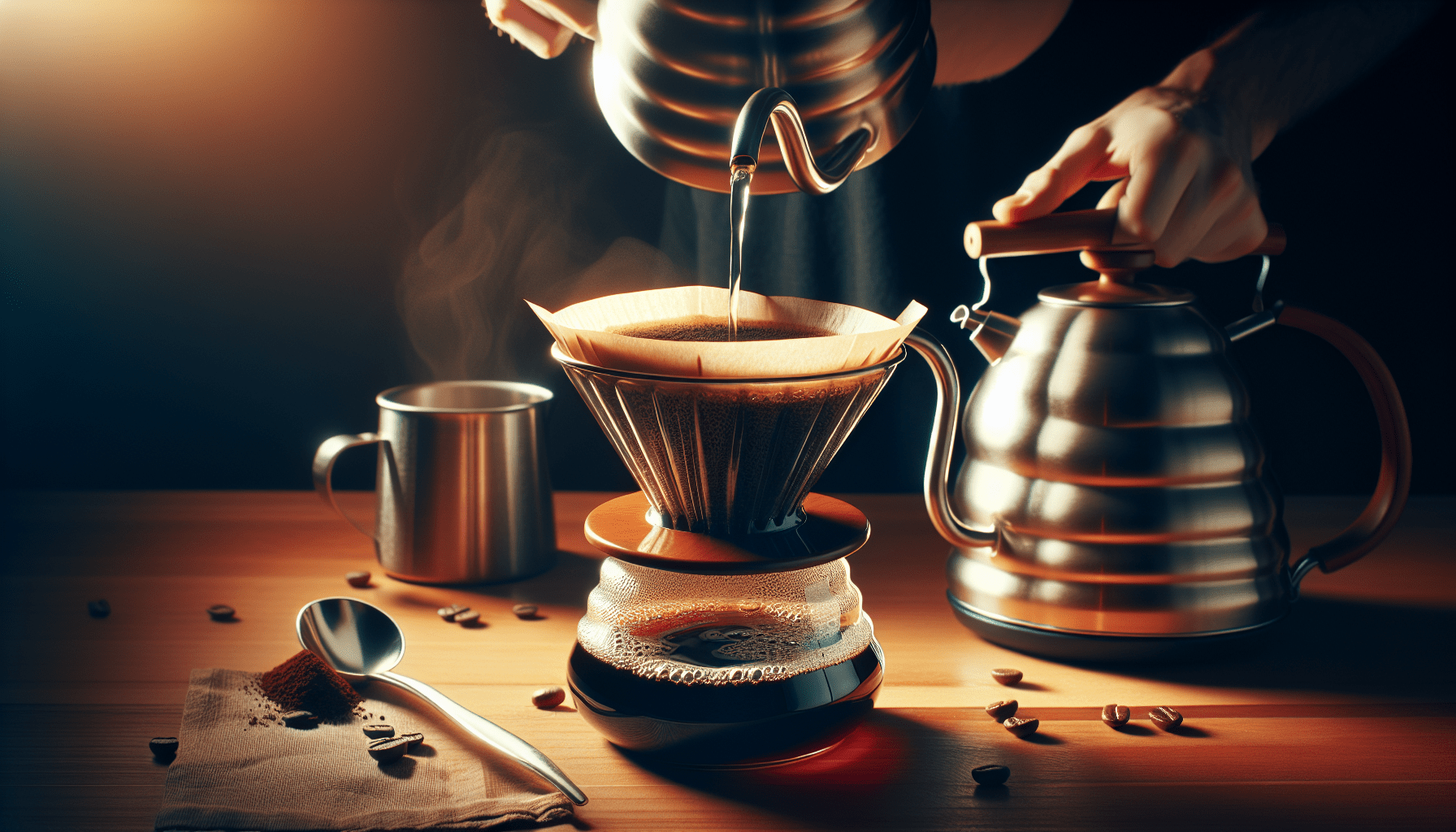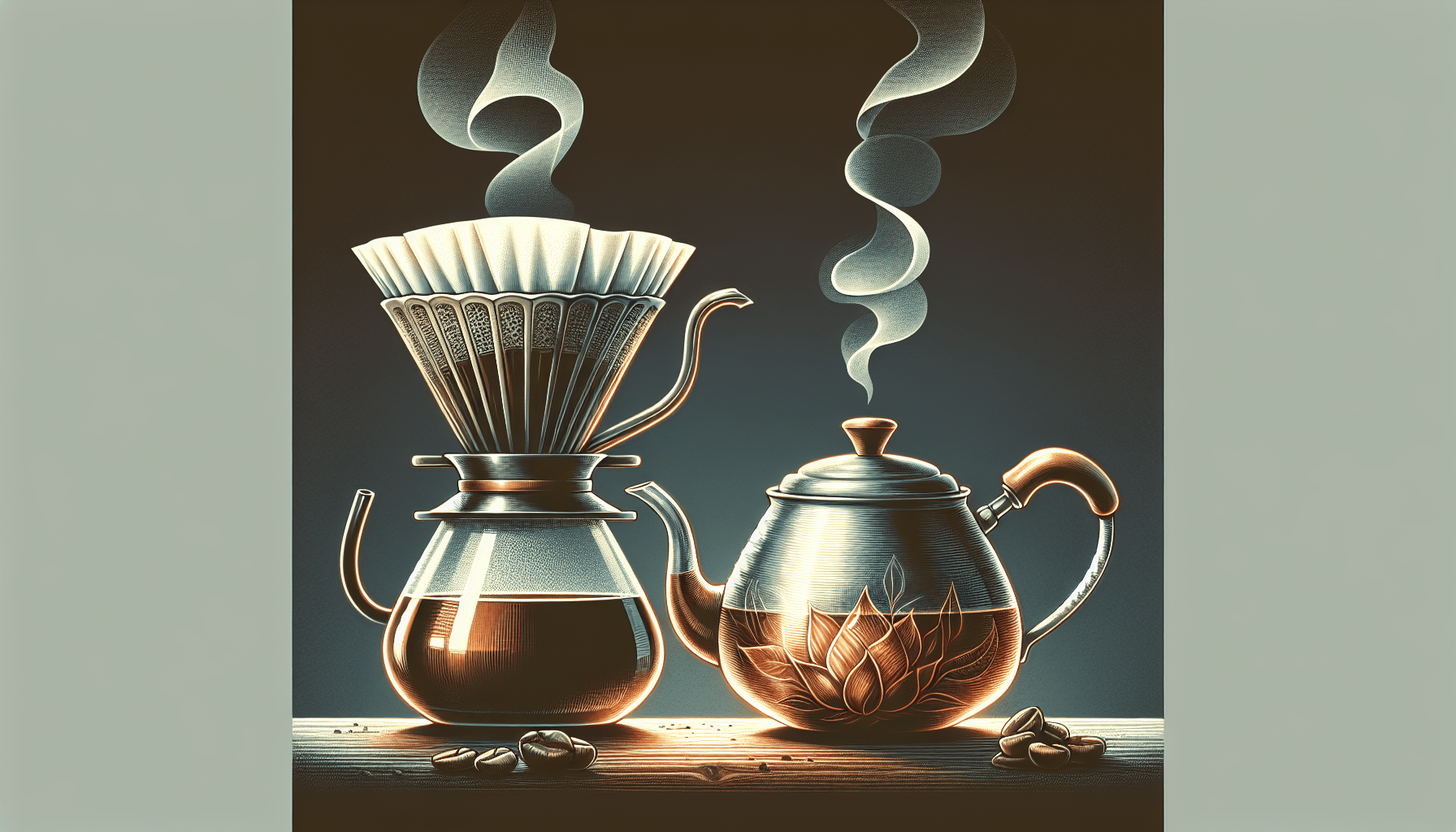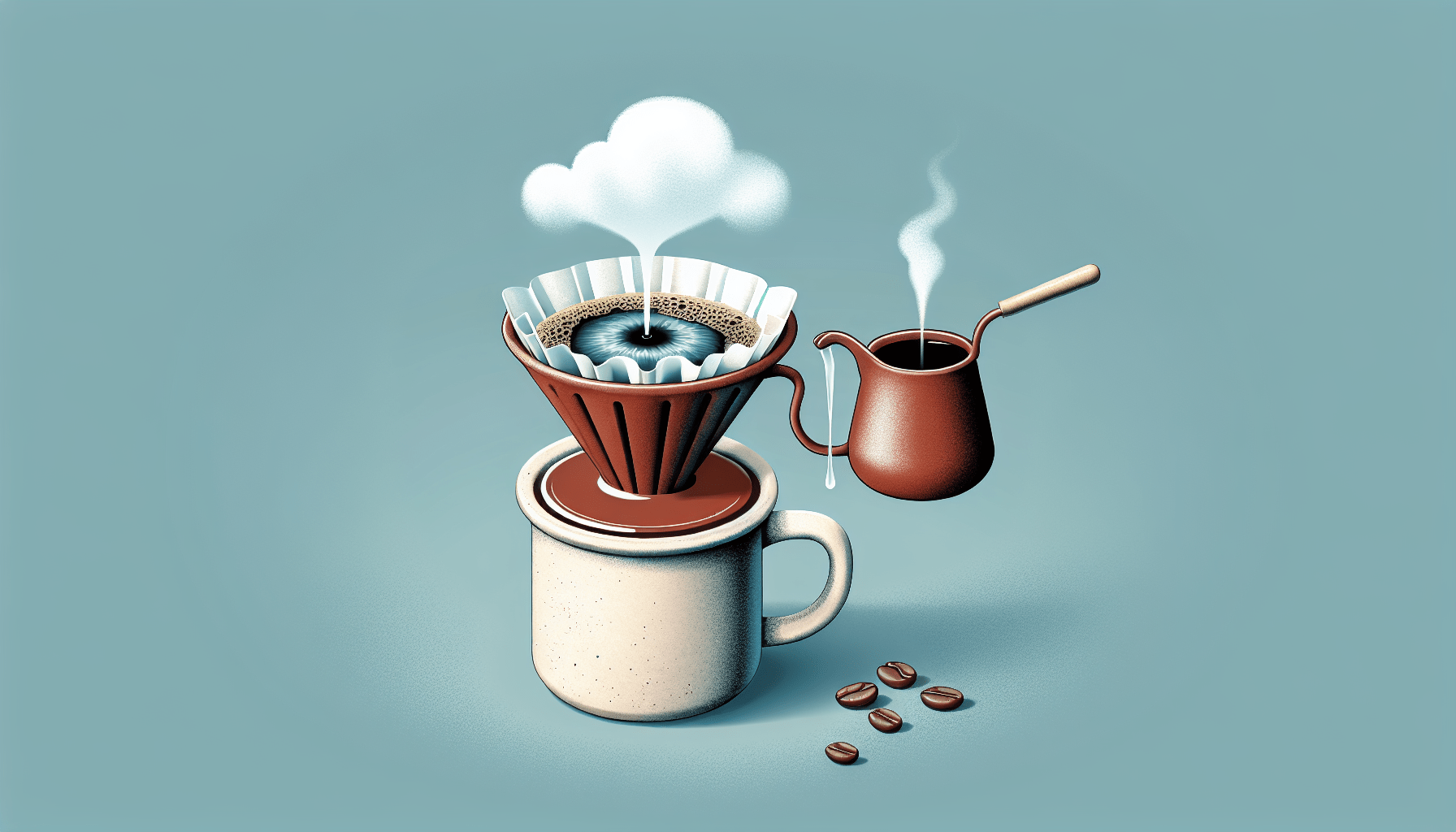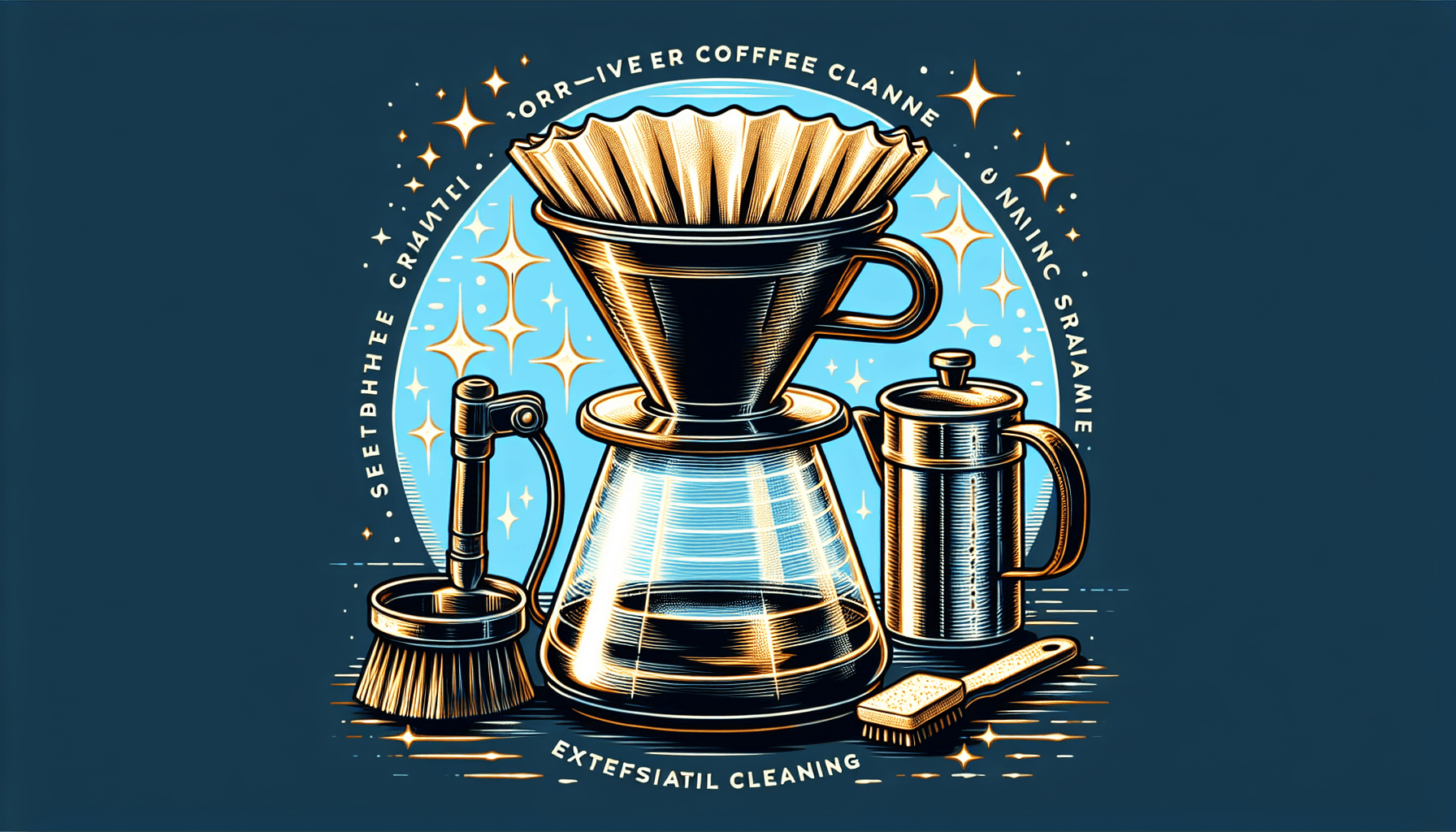If you’re a coffee lover, you know that waiting for your morning brew can feel like an eternity. But fear not, because we’re here to answer the burning question on your mind: how long does it actually take to make coffee with a pour-over coffee maker? The answer may surprise you, as it turns out that this method of coffee making is not only a delicious way to savor your favorite beverage, but it’s also surprisingly quick. In fact, with a pour-over coffee maker, you can have a perfect cup of joe in just a matter of minutes. So, grab your favorite mug and let’s explore the art of pour-over coffee brewing!
Preparation
Before you can enjoy a delicious cup of pour-over coffee, it’s essential to gather all the necessary equipment. This includes a pour-over coffee maker, a kettle for boiling water, a coffee grinder, and fresh coffee beans. Depending on your preference, you may also need a coffee scale or a measuring scoop to ensure you have the right amount of coffee grounds. Taking a few minutes to gather all of these items will make the brewing process much smoother.
Once you have your equipment ready, it’s time to move on to the next step: grinding the coffee beans. Grinding your beans just before brewing ensures that you capture the full flavor and aroma of the coffee. If you’re using a manual coffee grinder, start by adjusting the grinder settings to your desired coarseness. For pour-over coffee, a medium-fine grind is generally recommended. However, feel free to experiment with different grind sizes to find your perfect brew. Once you’ve set the grinder, add the coffee beans and grind them until you have the desired quantity of ground coffee.
Boiling Water
Now that you have your equipment ready and your coffee beans ground, it’s time to boil the water. Begin by filling your kettle with the amount of water you’ll need for your brew. The exact amount will depend on the size of your pour-over coffee maker and the number of cups you wish to make. As a general rule of thumb, a ratio of one part coffee to fifteen parts water is a good starting point. Once the kettle is filled, place it on the stove or any heat source and turn it on to boil.
While you wait for the water to boil, you can proceed to the next step: pre-wetting the coffee filter.
Pre-wetting the Coffee Filter
To enhance the flavor extraction and ensure an even brew, it’s essential to pre-wet the coffee filter before starting the brewing process. Begin by placing the filter into the pour-over coffee maker, making sure it sits snugly against the sides. This will prevent any potential slippage or overflow when you pour the hot water.
Once the filter is in place, pour some hot water over it, making sure to wet the entire surface. This step helps to remove any potential paper taste from the filter and preheats the coffee maker, which is crucial for maintaining optimal brewing temperature throughout the process. Allow the hot water to fully drain into your coffee pot or cup. Pre-wetting the coffee filter only takes a few seconds but greatly contributes to the overall taste and quality of your pour-over coffee.
Measuring Coffee
The key to a great cup of pour-over coffee lies in the precision of your coffee-to-water ratio. To achieve this, you can either weigh your coffee beans or use a measuring scoop. If you prefer a more accurate measurement, a coffee scale is an excellent investment. However, a measuring scoop can also do the job perfectly well.
When measuring your coffee, the general recommendation is to use one to two tablespoons of ground coffee per six ounces of water. However, feel free to adjust this ratio based on your personal preference for a lighter or stronger brew. Remember, the perfect coffee-to-water ratio will vary depending on the beans you use and your desired taste profile. Once you have the right amount of coffee, it’s time to move on to the next step: bloom time.
Bloom Time
The bloom is a crucial step in the pour-over coffee brewing process that allows the coffee grounds to degas and release their optimal flavors. To achieve the bloom, start by pouring a small amount of hot water into the center of the coffee grounds, just enough to saturate them. Then, let the coffee bloom for about 30 to 45 seconds.
During this bloom time, you’ll notice bubbles forming and the coffee grounds expanding. This process indicates that the coffee is releasing carbon dioxide and volatile compounds, which contribute to the overall flavor profile. Allowing the coffee to bloom sets the stage for a more balanced and flavorful cup of coffee.
Pouring Technique
Now that you’ve experienced the bloom time, it’s time to move on to the main pouring process. Pouring the hot water in a controlled manner is crucial for an even and consistent extraction. It’s best to pour the water in a slow, circular motion, starting from the center and moving outward, then back to the center.
Pouring slowly and evenly allows the water to interact with the coffee grounds more evenly, maximizing the extraction of flavors. Additionally, maintaining a steady flow prevents over-extraction or under-extraction of certain areas, ensuring a well-balanced cup of coffee. As you pour, be mindful of the amount of water you’re adding to maintain the desired coffee-to-water ratio.
Total Brewing Time
The total brewing time for a pour-over coffee can vary based on factors such as grind size, coffee-to-water ratio, and personal preference. On average, the brewing process usually takes around three to four minutes. However, this time frame is not set in stone and can be adjusted to suit your taste preferences.
If you prefer a stronger cup of coffee, a longer brewing time will extract more flavors from the coffee grounds. On the other hand, if you prefer a lighter, milder cup, a shorter brewing time will result in a more delicate flavor profile. Experimenting with different brewing times allows you to fine-tune your pour-over coffee to perfection.
Clean-up
Once you’ve enjoyed your delicious cup of pour-over coffee, it’s important to properly clean your coffee maker for future use. Start by discarding the used coffee grounds into a compost bin or trash can. Rinse the coffee maker thoroughly, ensuring that all residual coffee grounds are removed.
To ensure a deep clean, use warm, soapy water and a brush or sponge to scrub any remaining coffee oils or stains. Pay special attention to the filter and the carafe, as these areas tend to accumulate residue over time. Rinse all components thoroughly with clean water, making sure no soap residue remains. Regular cleaning and maintenance will prolong the lifespan of your pour-over coffee maker and guarantee the best-tasting coffee every time.
Experimenting with Variables
If you’re feeling adventurous, don’t be afraid to experiment with different variables to enhance your pour-over coffee experience. Testing different bean types is a great way to discover new flavors and find your favorite coffee profiles. Whether you prefer a rich, full-bodied dark roast or a bright and fruity light roast, exploring various coffee beans can broaden your coffee horizons.
Another variable to consider is water temperature. While the standard water temperature for pour-over coffee is around 195°F to 205°F (90°C to 96°C), adjusting the temperature slightly can result in subtle flavor variations. Warmer water can enhance the extraction process, while slightly cooler water can bring out different flavor nuances. Keep in mind that experimenting with water temperature should be done in small increments to avoid drastic changes in taste.
Conclusion
Making pour-over coffee is a delightful and rewarding process that allows you to savor the full flavors and aromas of your favorite coffee beans. By following the steps outlined above, you can achieve a consistently great cup of pour-over coffee every time. Remember, preparation is key, from gathering your equipment to grinding the coffee beans. Pay attention to each step, from boiling the water to cleaning up afterward. Experiment with variables such as coffee-to-water ratio and brewing time to find the perfect balance that suits your taste preferences. With a little practice and a sense of exploration, you can optimize your coffee-making experience and enjoy the satisfaction of brewing your own perfect cup of pour-over coffee.




